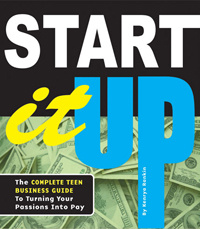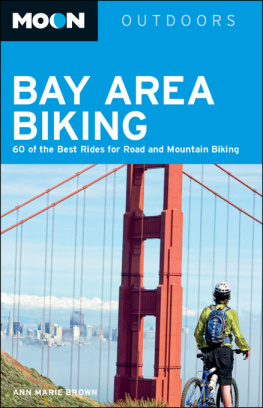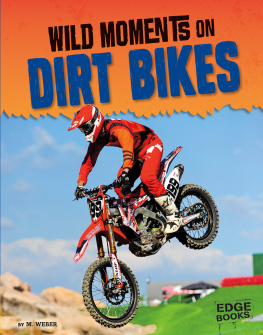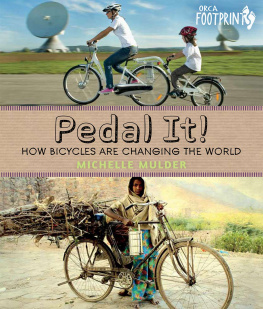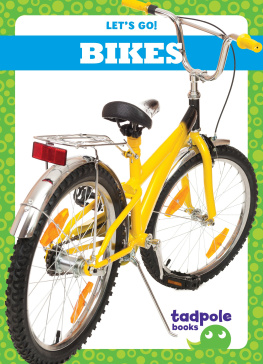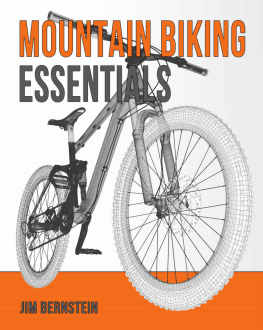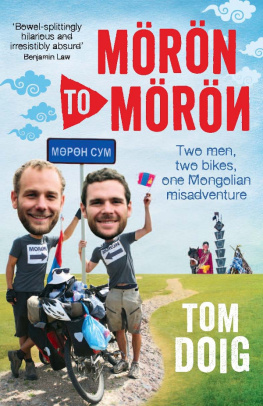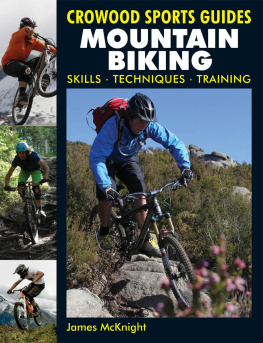FOREWORD
by Dede Barry
Each and every July when I was growing up, Id be able to stand on the side of the road in front of my house and watch as bike racers flew past me. These cyclists became my heroes; they inspired me. On my first bike, I rode to school, raced friends around the block, and got to really know my hometown of Milwaukee. A few years later, I lined up for my first race (on a borrowed racing bike, which was way too big) on a steaming hot July day. I had on only a pair of plastic sandals, a pair of black shorts, and a white T-shirt. The gun went off, and the rest was a blur of cyclists spinning, sprinting, and flying along the lakefront. After 30 minutes of racing, I bore down on the finish line. I finished second, but the thrill wasnt in the resultit was in the race itself. The party environment, the community surrounding the event, and the effort of the race all had me buzzing: Smoking BBQ pits lined the course, spectators cheered above the MCs thundering voice, and cyclists sped around the circuit. The fans fed my spirit. I was hooked on riding. Slowly, cycling crept into my life and led me on what has become a lifelong and global journey.
As a child, the bike gave me freedom to explore and make new discoveries, and today, decades later, I still feel as though Im on a unique journey every time I ride. My bike has immersed me in different cultures, cleared my mind, sparked my creativity, carried me over mountain peaks, and exhilarated me on the descents. Its also kept me physically and mentally healthy. I met my husband on my bike, and Ive also made many lifelong friends there. We share something, which not only draws us together but also gives us a unique perspective on the world.
When I was a teenager, I moved to Boulder, Colorado (a cycling mecca), to pursue my racing career. While huffing up the foothills of Boulder one sunny winter day, I met Rob Coppolillo. He encouraged me all the way to the top of those hills and then proceeded to entertain me for the duration of the two-hour ride home. We talked about politics, music, school, training, racing, food, wine, European football, Nordic skiing, and even dancing. Rob was an aspiring professional cyclist, but for him, the bike was, and still is, about much more than the finish line. His passion for cycling has always been infectious. Over the years, as we have aged, our friendship has grown. We have both matured, but even now when we ride together I always feel a jovial adolescent freedom that reminds me of the first time we rode together.
Even though my career as a professional cyclist is over now, I still ride almost daily. My bike transports me to and from work, and over to school and the store as well. And I explore the countryside on family bike rides with my childrenbut for peace and fitness, I escape to the mountains alone. A few hours on the bike invigorates me in a way that nothing else can. For as long as Im physically able to pedal, my bike will be a source of freedom and exploration. It always takes me where I need to go, and it introduces me to new people and places, and even new ways of thinkingjust like it always has.
With his inspirational writing, Rob will introduce you to a sportand a journeythat has the power to change your life. In the meantime, if youre ever biking around Spain, keep an eye out for me!
Dede Barry was the 1989 junior world champion in road cycling. During her career as a professional, she competed throughout Europe and the United States, winning dozens of races. She was the first American woman to win a World Cup event, and in 2004, she took the silver medal in the time trial at the Athens Olympics. Shes married to Michael Barry, also a professional cyclist, and they have two sons, Liam and Ashlin. They live in Girona, Spain.
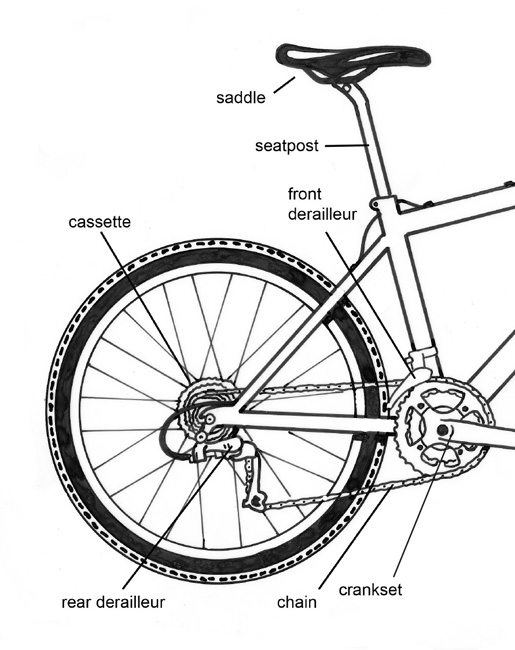
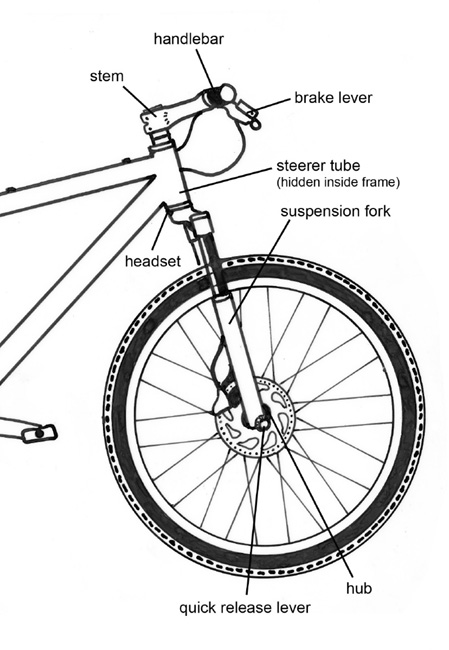
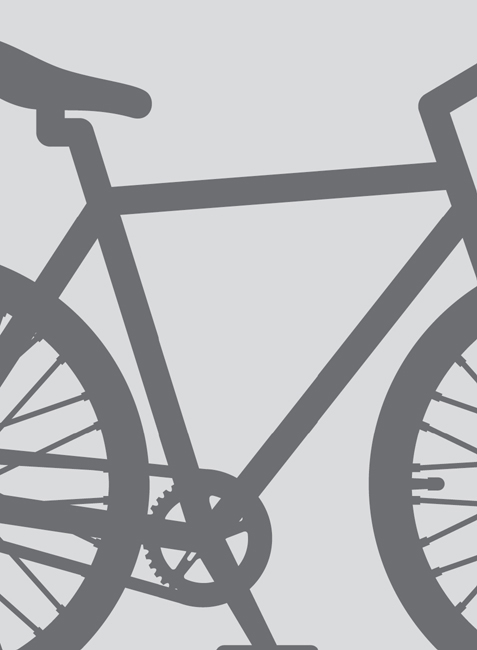

F or many years now, most cycling enthusiasts have attributed the first bicycle design to Leonardo da Vinci, one of the original Renaissance men, at around 1500 CE. Sketches in his Codex Atlanticus show a remarkably modern, two-wheeled machine; the only problem with this picture (so to speak) is that the sketches now appear to be a forgery. A few holdouts like historian Augusto Marinoni still claim Leonardo as the inventor of the bicycle, but whatever the truth of that original design may be, the first modern designs appeared in France and Germany around the 1860s (although theres still a lot of debate about who exactly invented the modern machine that we ride today).
Since then, the bike has become a part of everyday life for people around the world. Bikes themselves have evolved into everything from superlight racing machines to utilitarian work vehicles. And thats really the fun of itbecause there are so many ways to enjoy cycling today, it appeals to just about everybody.
EUROPEAN RACES AND TWO WORLD WARS
During the 1880s, bicycle design still had a ways to go. Called a vlocipde (or fast foot), it had a wooden seat and rims, and some models couldnt even be steered. These bikes lacked pedals, too, so riders just kicked their feet along and held on for the ride. One of these early models was called a boneshaker or a penny farthing. Youve probably seen it beforeit was the strange-looking contraption with a huge wheel in front and a tiny one in back, with a saddle (seat) placed perilously high in between them. Any guesses why they called it a boneshaker? Ouch!
The boneshakers incorporated pedals into the design, but the pedals were attached directly to the front wheel, much like a little kids tricycle today. Simple, sure, but it was a primitive design, which overemphasized the front wheel, leaving the ride unstable and dangerous. Riders coined the term breakneck speed to describe the results of a high-speed crash on one of these things.

